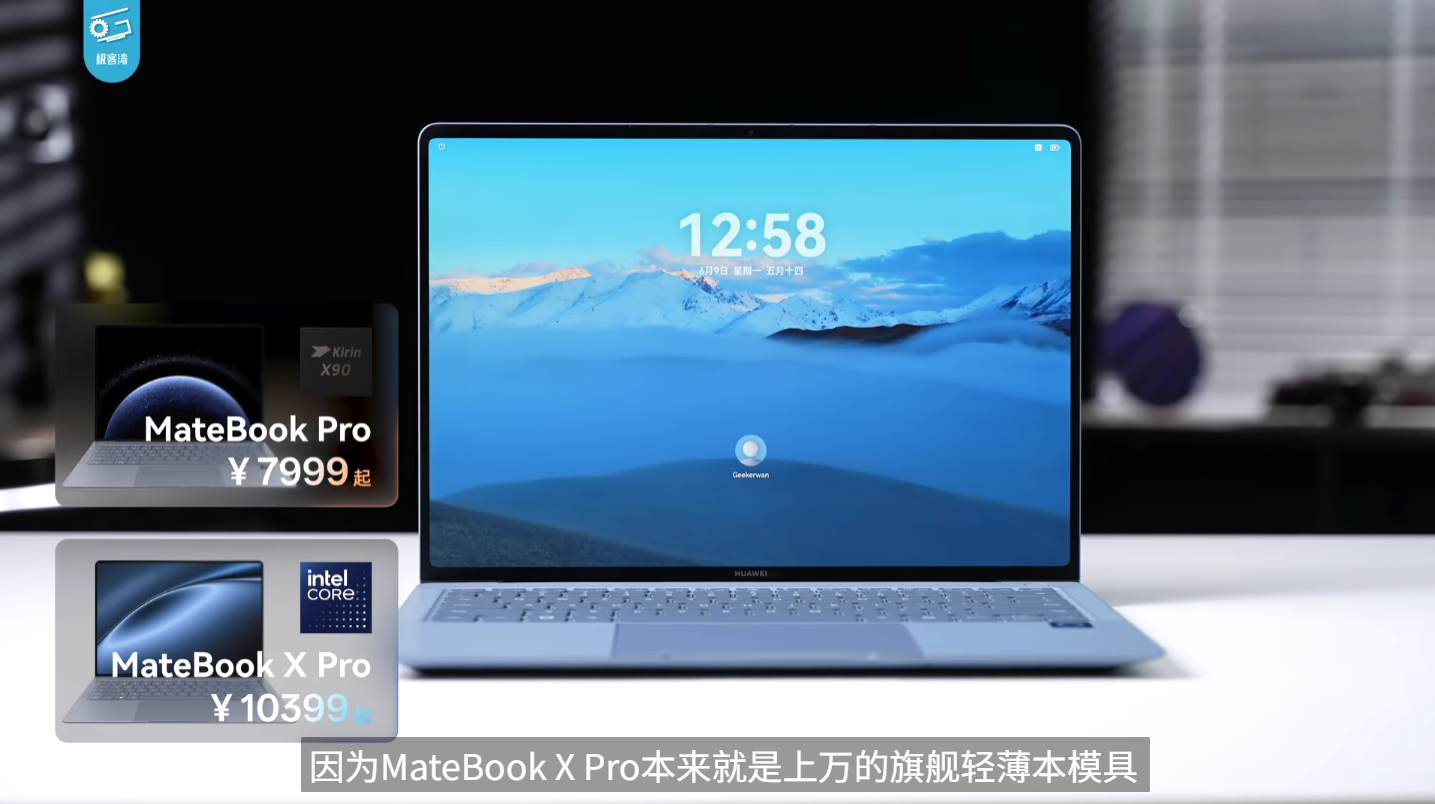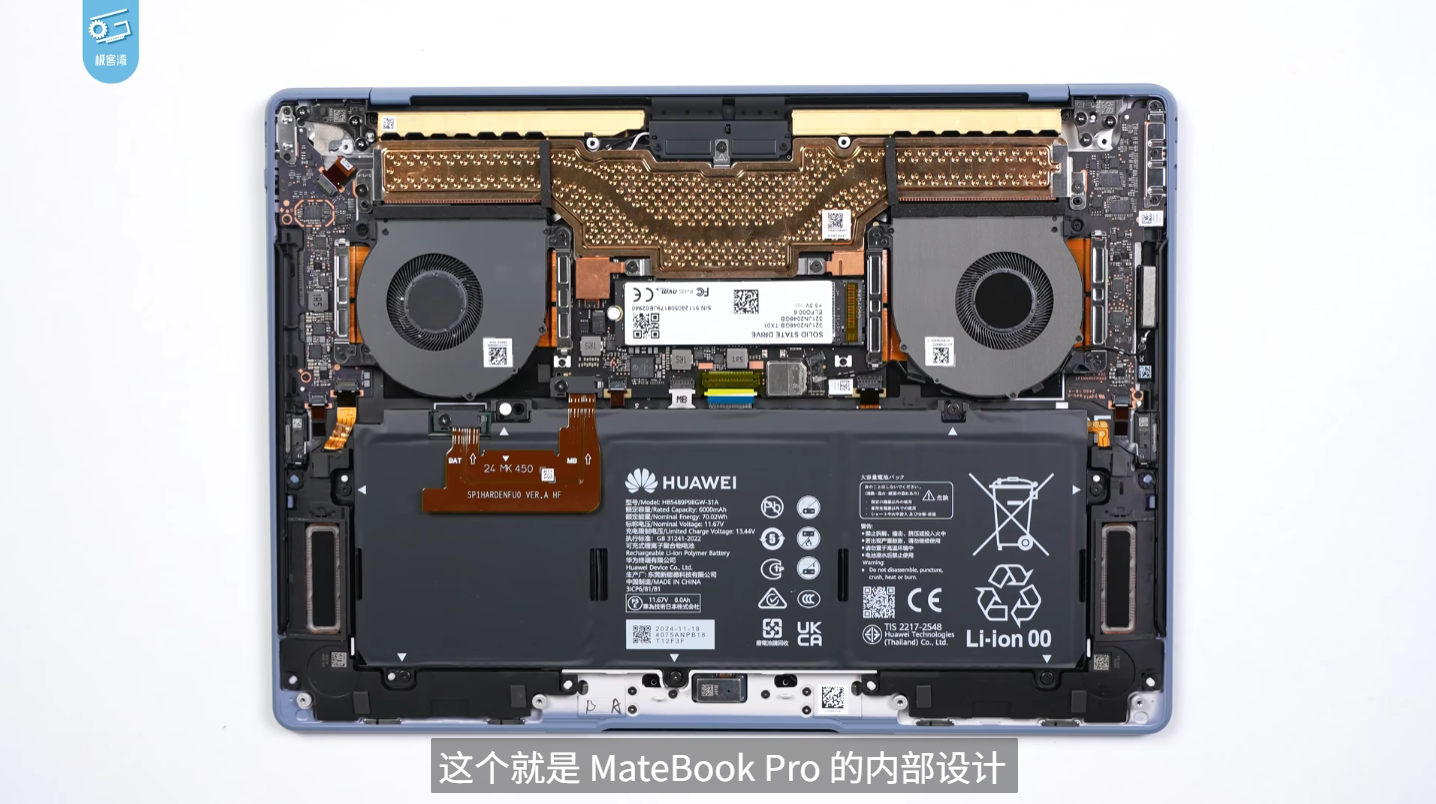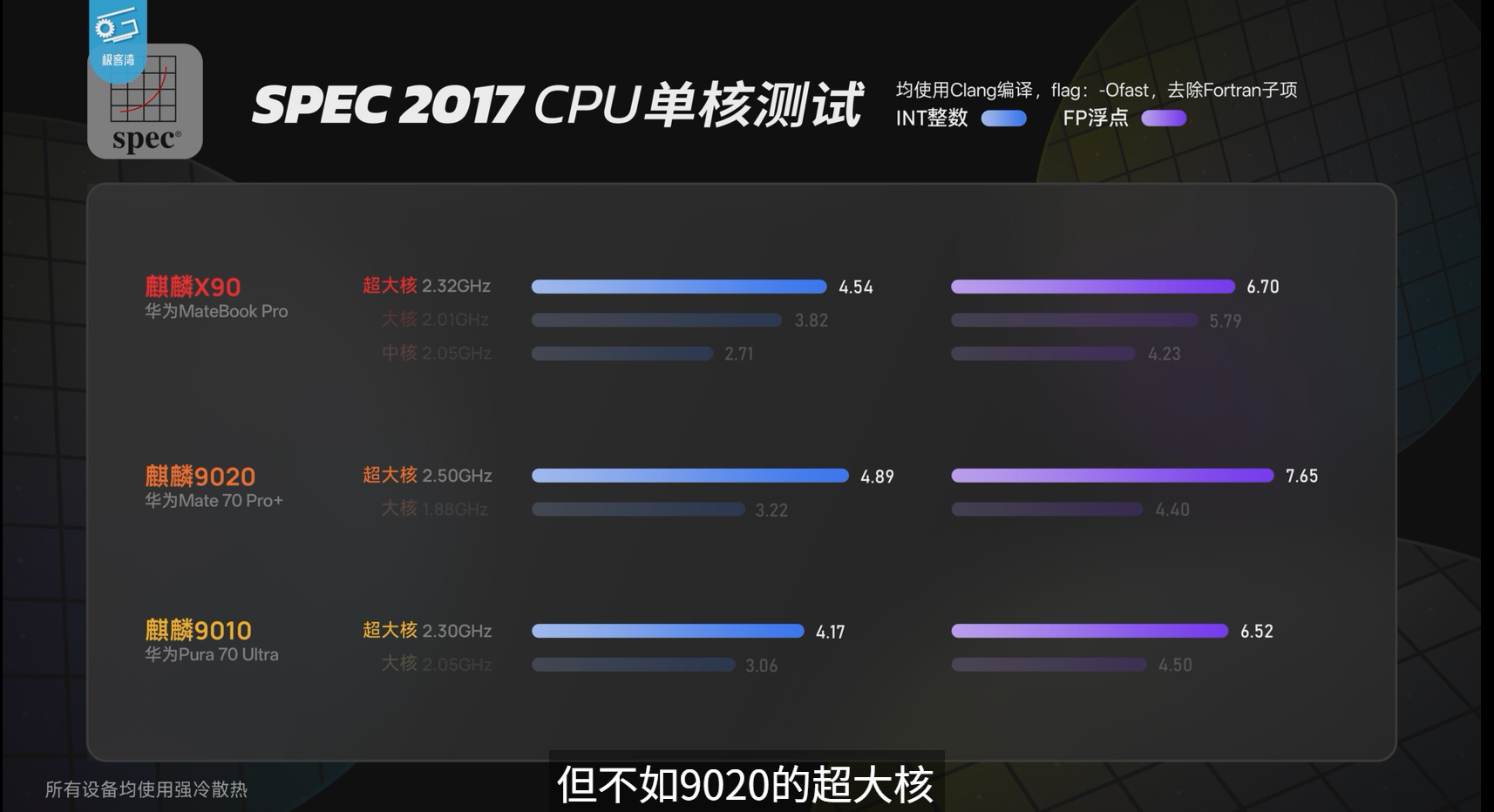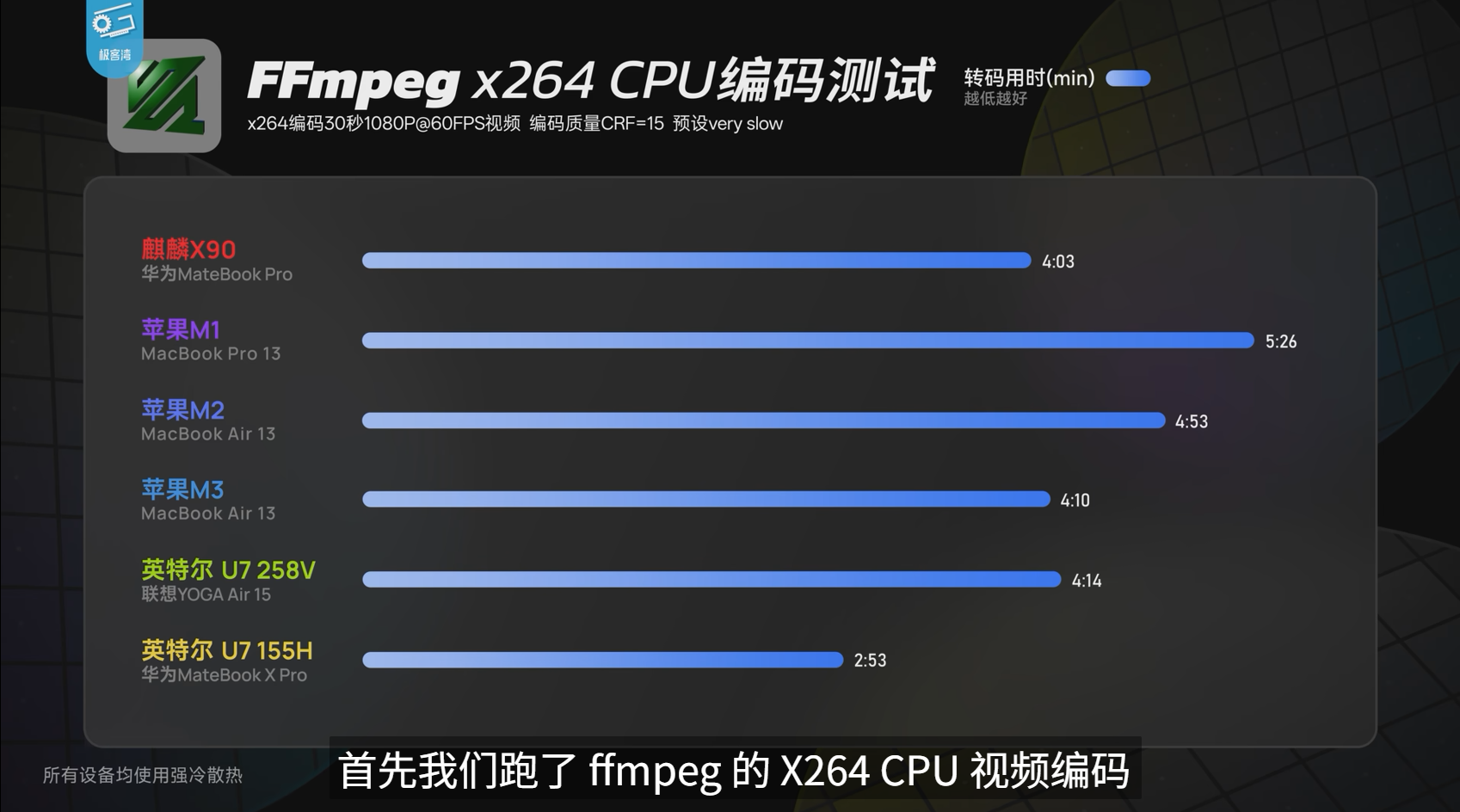Tech YouTuber Geekerwan released an in-depth review titled "Huawei HarmonyOS PC Review: How Does the Kirin X90 Perform? How's the System Experience?", providing a comprehensive evaluation of the HarmonyOS-powered MateBook Pro.

Huawei's new generation of ultra-thin MateBook Pro and foldable-screen MateBook Fold have become the first PCs to feature Huawei's self-developed HarmonyOS, powered by the Kirin X90 processor specifically designed for PC platforms.
The reviewer noted that the Kirin X90's multi-core CPU performance and energy efficiency exceeded expectations. While its single-core efficiency still lags behind Apple's M-series chips, its multi-core efficiency is on par with Intel's Lunar Lake. As for GPU performance, the X90 delivers comparable performance to the Tianxian 9000 but remains significantly behind Apple's M1 and Intel's 155H.
HarmonyOS demonstrated excellent smoothness and battery life, with hardware-software synergy enabling 7 hours and 43 minutes of office use—outperforming its Windows-based predecessor. Although HarmonyOS is still in its early stages and lacks a mature app ecosystem, the reviewer encouraged manufacturers to continue building their own hardware-software ecosystems, arguing that more choices ultimately benefit consumers.


The MateBook Pro features an innovative internal layout with a central rectangular mainboard flanked by separate daughterboards on both sides. The design extensively utilizes BTB (Board-to-Board) connectors across the mainboard, with the processor featuring soldered memory and employing VRM (Voltage Regulator Module) power delivery.


The Kirin X90 processor features a deca-core (10-core) configuration with four extra-large cores, four large cores, and two medium cores, delivering twenty threads in total. With a die size of 208 square millimeters, it significantly surpasses competitors like Apple's M-series chips, AMD's 7840H, and Qualcomm's XLT in terms of physical dimensions.


Due to limitations in HarmonyOS's compatibility, many benchmark tools cannot run natively. As a result, the content creator ported specific testing utilities for evaluation, including the SPEC CPU 2017 single-core benchmark and ffmpeg x264 CPU encoding tests.
The reviewer noted that While its single-core efficiency still lags behind Apple's M-series chips, its multi-core efficiency is on par with Intel's Lunar Lake. As for GPU performance, the X90 delivers comparable performance to the Tianxian 9000 but remains significantly behind Apple's M1 and Intel's 155H.




